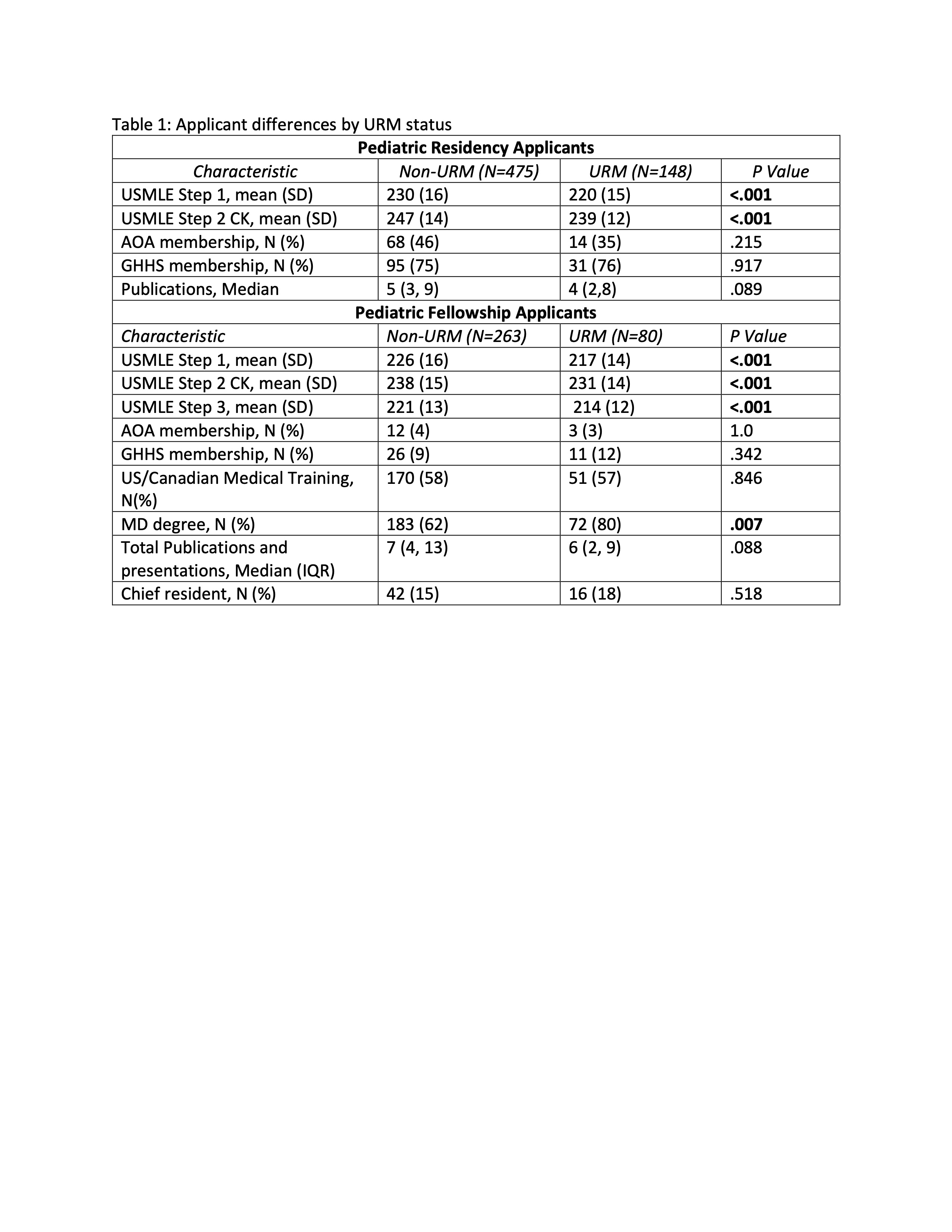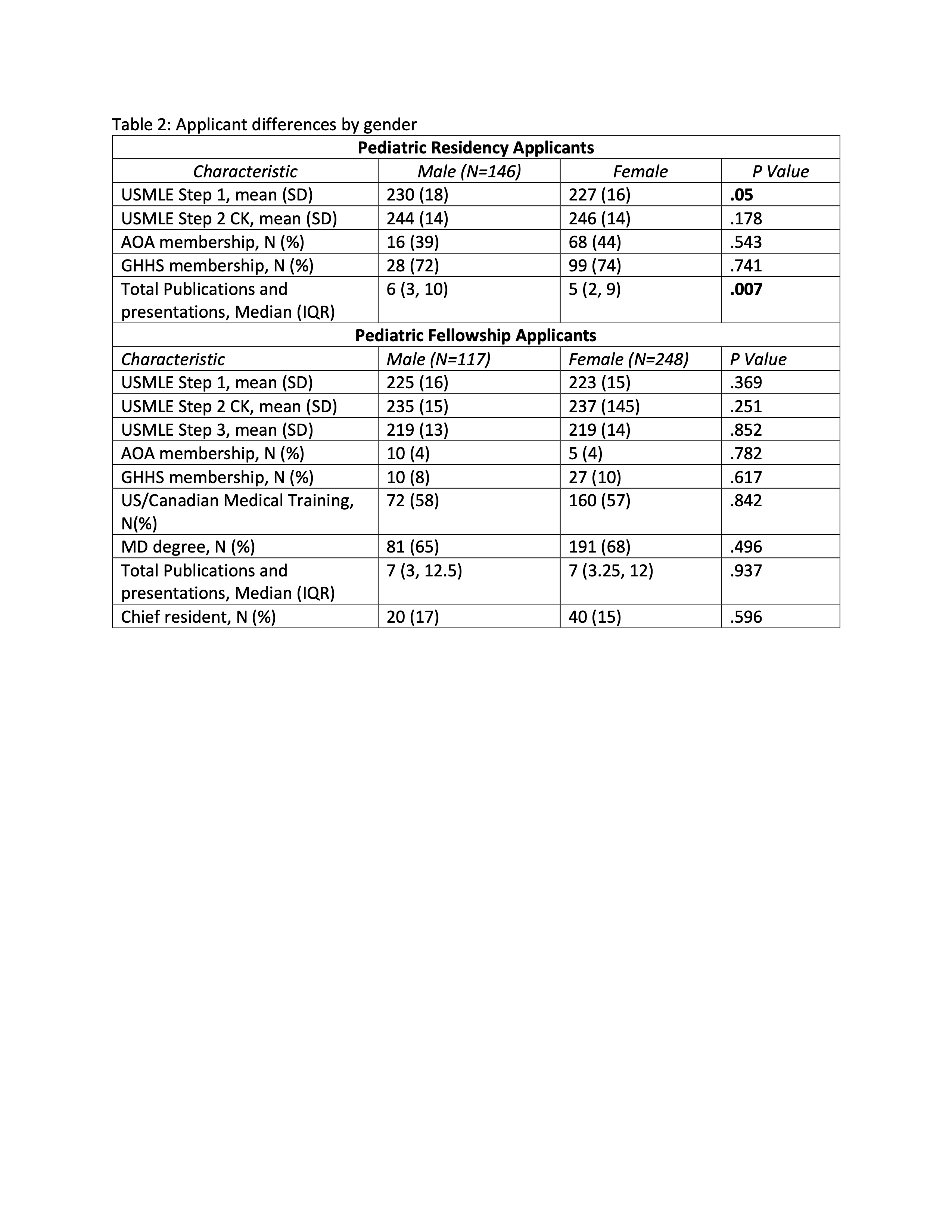Medical Education: Diversity, Equity & Inclusion
Medical Education 8: Diversity, Equity, & Inclusion 2
560 - Choosing Pediatric Trainees and Promoting Diversity: Residency and Fellowship Applicant Characteristics by Race, Ethnicity and Gender
Publication Number: 560.23

Melissa L. Langhan, MD, MHS (she/her/hers)
Associate Professor of Pediatrics and Emergency Medicine
Yale university
New Haven, Connecticut, United States
Presenting Author(s)
Background:
Trainees submit an array of written application materials when applying to residency or fellowship programs, including test scores (USMLE), honor society membership, research and leadership opportunities. These components inform applicant selection and may be affected by race, ethnicity and gender. By evaluating these materials to determine which aspects may lead to bias in selection processes, proactive interventions can be implemented to increase diversity, particularly for applicants who are underrepresented in medicine (URM).
Objective: We sought to examine differences in written application materials by race, ethnicity and gender.
Design/Methods:
Standard written application materials from a one-year retrospective sample of applicants to 1 pediatric residency and 8 fellowship programs were collected from a tertiary care academic center in the Northeast. Data abstracted from these materials included demographic characteristics (e.g., gender, race, ethnicity), graduate degrees, country of medical training, USMLE scores, alpha omega alpha (AOA) and gold humanism honor society (GHHS) membership, number of publications and presentations, and election as chief resident. URM applicants self-identified as Black, Hispanic/Latino, American Indian, Alaskan, Native Hawaiian, Pacific Islander, and Southeast Asian (Vietnamese, Cambodian, Laotian, Indonesian).
Results:
Data from 644 residency and 408 fellowship applicants were analyzed. There were 148 (23%) URM and 146 (23%) male residency applicants and 90 (22%) URM and 125 (31%) male fellowship applicants. Applicant differences by URM status and gender are presented in Tables 1 and 2. Compared to non-URM applicants, URM residency and fellowship applicants had significantly lower USMLE scores; URM fellowship applicants were more likely to have an MD degree (vs. DO or other degree types). Female residency applicants had significantly lower USMLE step 1 scores and total numbers of publications and presentations compared to male applicants; there were no differences by gender among fellowship applicants.
Conclusion(s):
While known differences in USMLE scores are seen among pediatric residency and fellowship applicants by URM status, we did not find any significant differences in honor society membership, leadership positions, or publications and presentations. Interestingly, female residency applicants had fewer publications and presentations than their male counterparts. These data can be used by program leadership and selection committees when making decisions regarding selection and diversity efforts.

